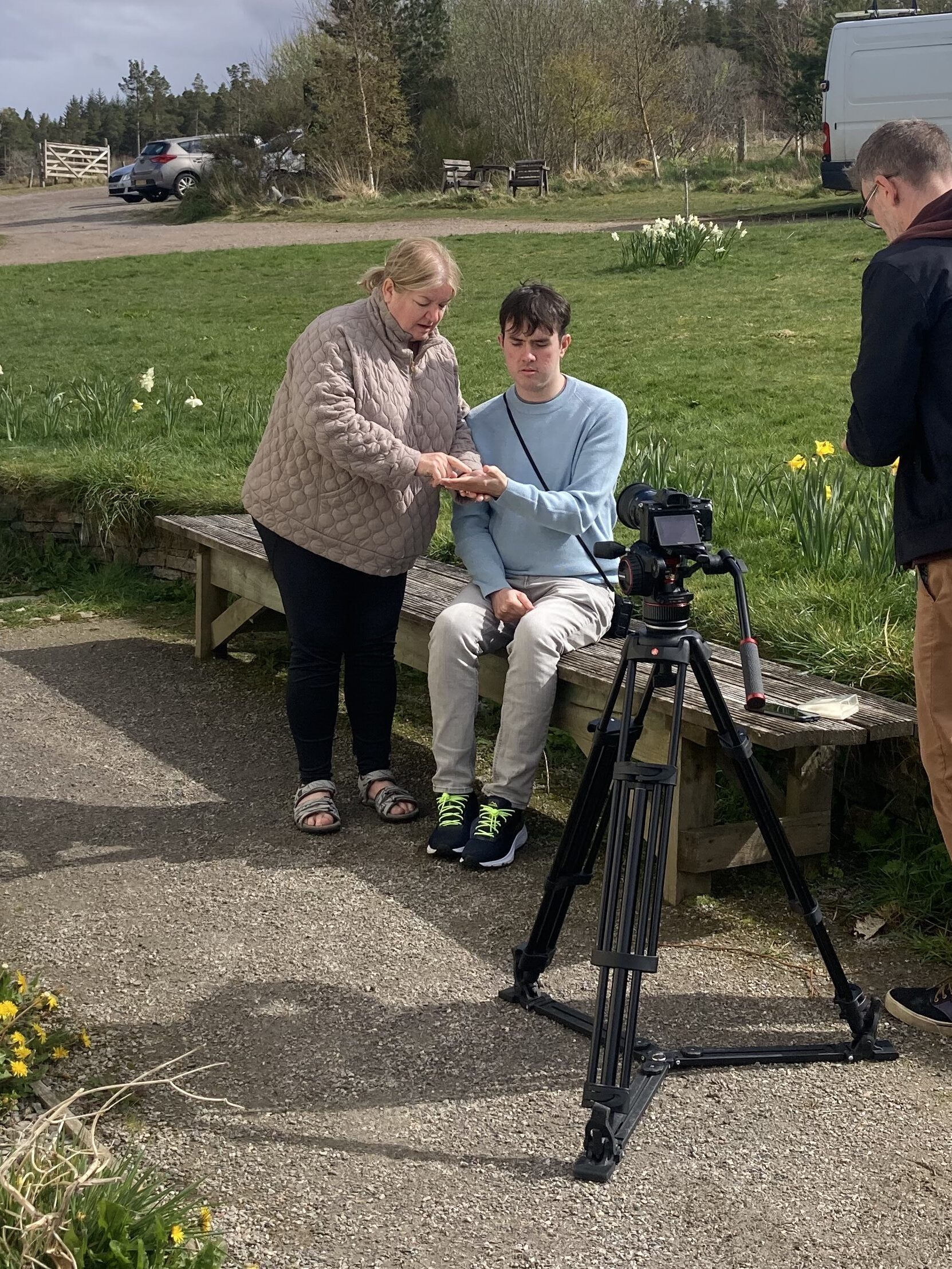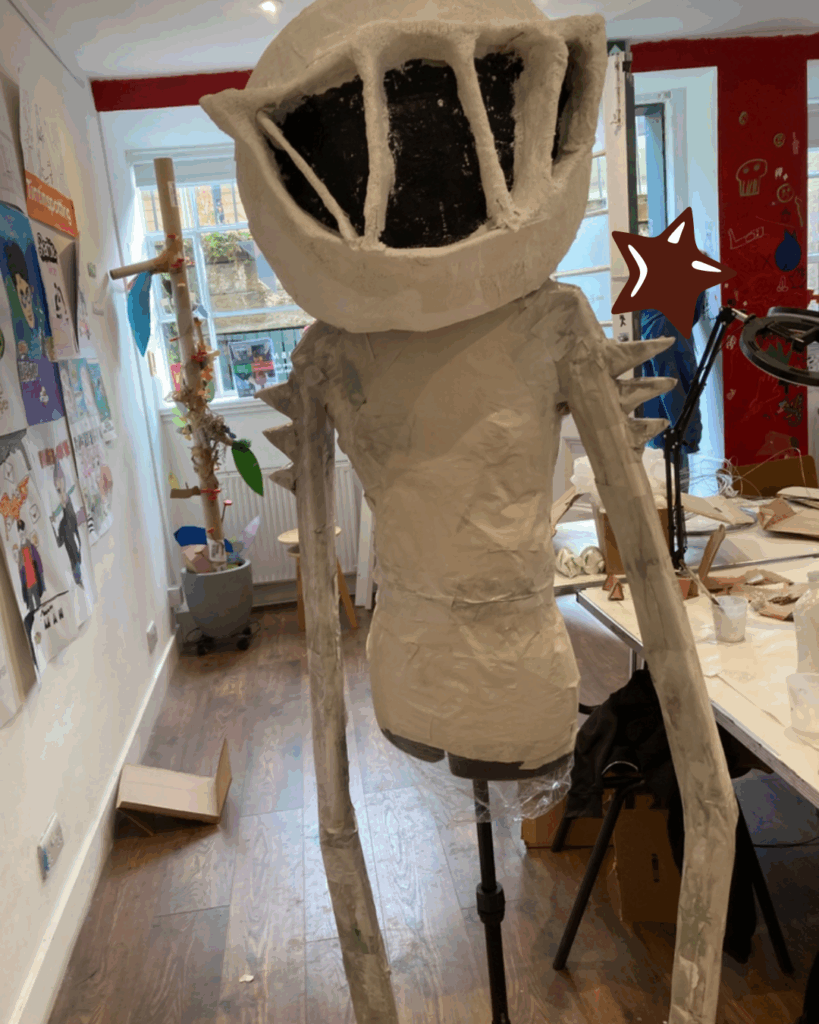Andrew is one of 13 committee members leading the Youth-Led Fund, a project funded by Creative Scotland and facilitated by Moniack Mhor. The fund is now closed, but you can read more about what it looks like here.
As the taxi rumbled round a corner, I caught my first glimpse of Moniack Mhor, tucked away like a secret among the rolling greens of the Highlands, April sunshine shimmering off its roof. Well, that is the romantic version. In reality, as a visually impaired person, all I saw was a large, abstract blob which may—or may not—have been a curious cow. And, let’s face it, it’s Scotland: it was probably pouring with rain and the skies wouldn’t have been out of place in a film depicting Armageddon.
Regardless of the meteorological reality, Moniack Mhor was to be home for the week. I was one of thirteen young people tasked with helping to develop a fund supporting isolated and marginalised artists across Scotland, and I arrived vibrating with excitement. I was raring to get started, even if I had no idea whatsoever as to where to begin.
In this article I want to share my experience on the Youth-Led Fund’s steering group, its triumphs and challenges, and why it matters so much. There will be no aliens or dinosaurs, sadly, though you can always find them on my own blog (ALERT! Shameless plug). Still, I promise it is worth reading.
Who Am I?
My name is Andrew. I am a deafblind poet studying an MLitt in Creative Writing at the University of Strathclyde, and I’m passionate about accessibility, inclusion, and disability rights. I’m also rather fond of Maltesers but that’s rather beside the point.
When I saw Moniack Mhor were recruiting creatives for a steering group, I leapt at it. It sounded meaningful, exciting, and, yes, the opportunity to spend a week in the Highlands may have sealed the deal. Judge me if you must.
Joining the Gang
Being part of the steering group has been extraordinary. I worked alongside some brilliant people who care deeply about making the arts more inclusive, and I even made a few friends along the way. I also learned how funding processes operate, how applications are reviewed, and just how multi-layered marginalisation can be.
During our residential, we spent hours discussing, debating, and shaping the Fund from scratch. It was intense, energising, and occasionally fuelled by panic-induced biscuits. Since then, we have continued the work over Zoom, wrestling with questions like: Who should we reach? How do we design an accessible application? What does marginalisation look like in different contexts? And why does Zoom keep kicking me out of meetings?!
The Triumphs
For me, the successes have been many. And I’m not saying that as a boast. In many ways, I only played a small role and success has been down to everyone playing theirs.
One major triumph is the sheer number of applications received. In April we asked ourselves, trembling with uncontainable fear: what do we do if nobody actually applies? Instead, the response has been overwhelming in the best way. It is humbling to see how many people resonated with our mission and trusted us with their ideas.
Even more impactful are the stories within those applications. Tales of hardship, resilience, creativity, and community. Parents championing their weans. Friends lifting each other up. People daring to dream. Some proposals genuinely made me bounce in my chair with excitement and others that had me reaching for the tissue box (which never seemed to be at hand when I needed it, annoyingly). Ultimately, though the creative projects are what we fund, it’s the people behind them that mattered the most. That’s what it’s really all about—giving people that extra help so they can pursue their dreams, possibly with S Club or Journey singing in the background.
Under Pressure
For any Queen fans who just read that subtitle, you are welcome.
Alongside the joy, this has been a demanding process. The questions ranged from the website’s colour scheme (my proposal of neon purple with dinosaur prints was, bizarrely, vetoed) to strategic decisions about funding, accessibility, and representation. How we would define marginalisation and isolation was also challenging; both are incredibly complex issues, spanning geography, socio-economic barriers, race, gender, sexuality, disability, and more. Simply put, how do you design criteria that serve so many different kinds of needs?
We did it through honesty, respect, and allowing our collective lived experiences to fuel our ideas. There were disagreements—I mentioned the neon dinosaurs, didn’t I?—but every voice mattered and compromise was key. That collaborative spirit really is amazing when it works.
So, Why Does It Matter?
This Fund matters because it helps real people. People who fall through the cracks. People unheard, unseen, or simply needing that bit of support to pursue their artistic ambitions. It also contributes to wider conversations about access, equity, and representation.
It’s my belief that Scotland needs more initiatives like the Youth-Led Fund. The response alone proves the demand. Work like this builds bridges between communities and creativity, and, in a noisy, fractured world, that connection is more vital than ever.
And now, if you can kindly picture me bowing under dramatic stage lighting while orchestral music swells, that’s this blog complete.
Read More from Andrew on his blog, here.








